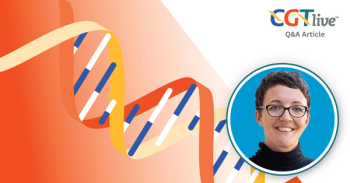
Inherited leber's congenital amaurosis gene therapy may be effective
A novel gene therapy approach for the treatment of a type of inherited retinal disease appears to be safe and effective in initial trials. Results offer hope for the treatment of a gamut of eye diseases that once were thought to be untreatable, according to one researcher.
Key Points
Leber's congenital amaurosis (LCA) is an inherited eye disease that causes progressive blindness. Onset of the disease begins in childhood, and it culminates in complete blindness by early adulthood. Patients exhibit a defect in a gene (RPE65) that specifically is expressed in the retinal pigment epithelium (RPE), causing retinal degeneration. Before the results of this preliminary trial were produced, no effective treatments for inherited retinal degeneration diseases such as LCA existed, Dr. Ali said.
Researchers are developing a gene therapy technique that can put the missing gene back into the RPE. Using an engineered viral vector, normal genes are injected into the eye and delivered to the defective RPE.
He and his fellow investigators conducted a study in three young adults aged 17, 18, and 23 years, all with advanced LCA. Each patient received a single injection of the engineered viral vector into the RPE. A significant improvement in retinal sensitivity was observed in one of the patients who had the least advanced degeneration of the retina.
Before the injection of the vector, patients underwent automated microperimetry tests in different parts of the retina to evaluate the sensitivity of the retina to flashes of light before and after the actual treatment.
"We found that we could improve retinal sensitivity in dim light by 1,000-fold," Dr. Ali said. "What we saw as a result of that was that the patient was able to see better in the dark and navigate through a maze much more effectively as a result of the therapy."
The introduction of the missing gene back into the RPE triggers the visual cycle to restore a closer-to-normal production of a chromophore that is required for normal function of the rods. He said that this one-time procedure is showing very promising results, which are expected to peak at around 6 months after treatment.
According to Dr. Ali, a much better treatment outcome should be possible in younger patients because the progression of their disease is not as advanced as it is in older patients. If younger patients could be treated before the degeneration process really sets in, there are much better chances of improving not only sensitivity throughout the retina but also treating the retina before key connections to the brain are fully formed, he said. That way, central vision and visual acuity might be improved early on, before it is too late.
"As is true for all genetic therapies, the younger the patient is treated, the better the chances of a successful treatment outcome," he said. "If we treat patients beyond the age of 8, I think it is going to be very doubtful that we will ever be able to completely restore their central vision."
The virus is injected into the back of the eye and causes a temporary retinal detachment that resolves within 24 hours. Dr. Ali said that following the injection, a large area (including the macula) can detach without any residual damage to the retina and without any surgical complications.
"This is important because the retina of these patients is fragile to start with compared [with] 'normal' individuals, and it was important to see that this procedure could be done safely," he said.
According to Dr. Ali, the other major potential risk that the gene therapy approach has is acute inflammation, an immune response following the introduction of the virus. To circumvent this possible problem, each patient received transient immune suppression.
The optimal dose of the viral vector therapy is highly dependent on the promoter used because the promoter will determine the level of gene expression. That optimal dose still needs to be established, however. Older patients with more advanced disease might fare better if super-high doses were used, and increasing the dose in those patients may be beneficial in preserving their existing vision. The focus right now must be to find the optimal dose in children first, however, according to Dr. Ali.
"I would predict that in a couple of years, there will be a licensed product for this particular form of LCA. So far, our studies and those from two other groups in the United States have been very convincing," he said.
Newsletter
Stay at the forefront of cutting-edge science with CGT—your direct line to expert insights, breakthrough data, and real-time coverage of the latest advancements in cell and gene therapy.

























